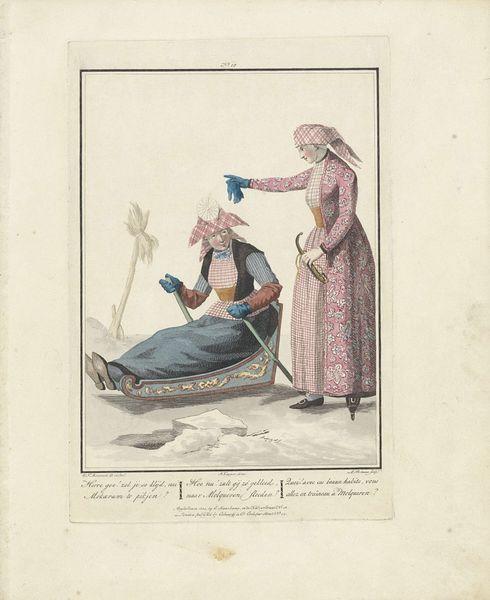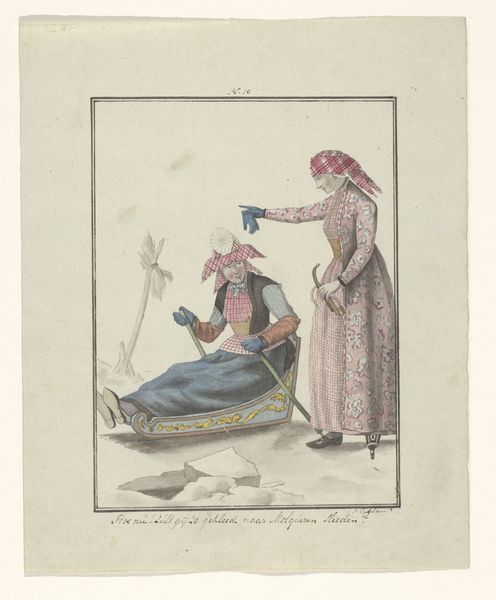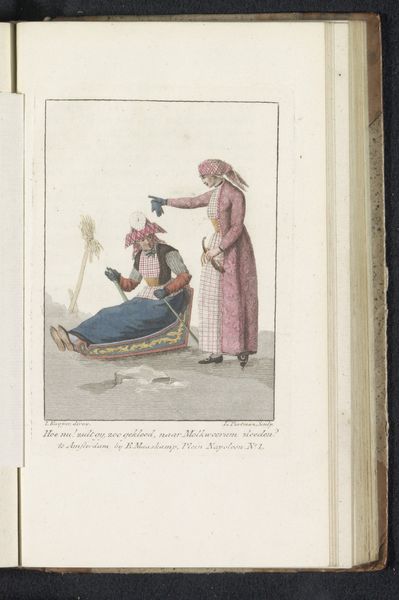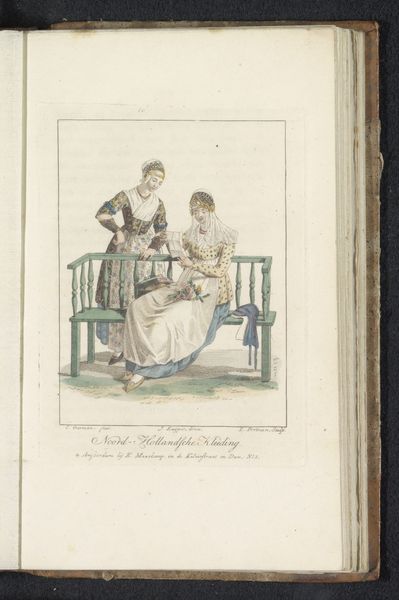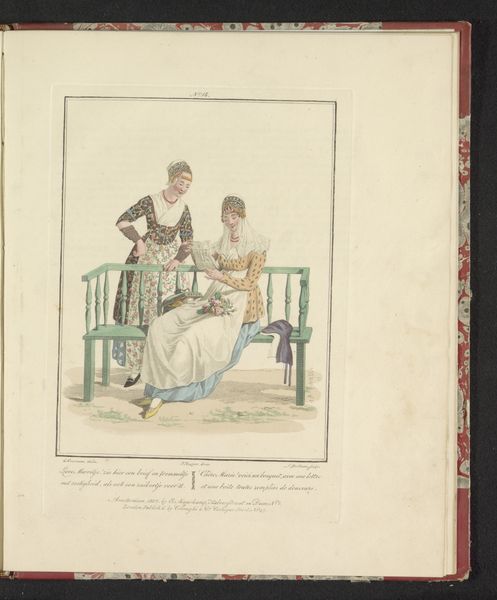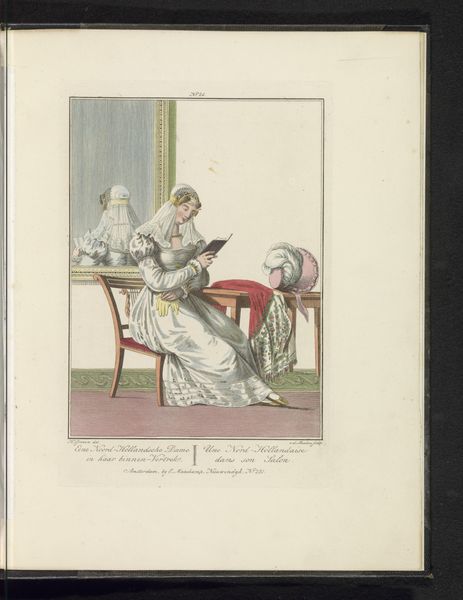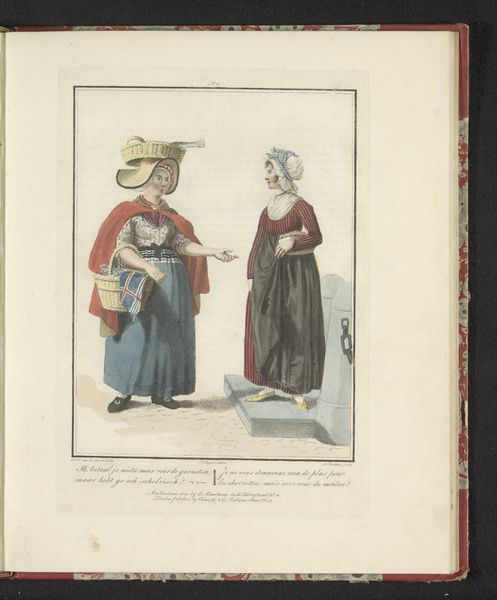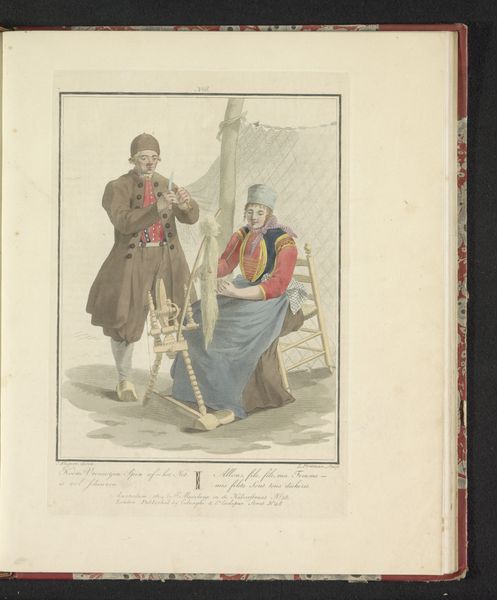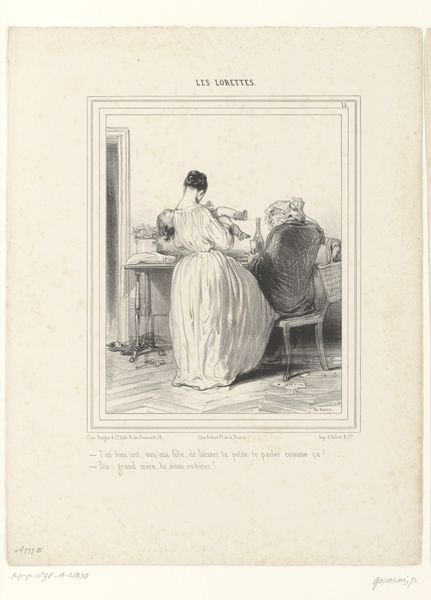
drawing, print, watercolor
#
portrait
#
drawing
#
neoclacissism
#
water colours
# print
#
figuration
#
watercolor
#
coloured pencil
#
genre-painting
Dimensions: height 238 mm, width 159 mm
Copyright: Rijks Museum: Open Domain
Editor: This is "Friese vrouwen op het ijs," or "Frisian Women on Ice," by Ludwig Gottlieb Portman, created in 1804. It's a charming watercolor and print depicting a winter scene. There's a playful energy to it; it feels both staged and genuinely candid. What story do you think it's telling? Curator: The charm you see is deceptive. Genre paintings like these, especially during the rise of nationalism in the 19th century, were often used to construct and reinforce ideas about regional identity and tradition. Portman isn’t just showing us Frisian women, but a particular, possibly idealized, view of them. Editor: So, it’s not simply a snapshot of everyday life? Curator: Precisely. Consider the context. This work emerges from a time of significant political upheaval, with the Batavian Republic under pressure from Napoleonic France. How do you think invoking "traditional" Frisian imagery might have functioned politically at that moment? Editor: Perhaps to assert a distinct cultural identity in the face of outside forces? To promote regional pride or even resistance through the depiction of ordinary women carrying on with their lives? Curator: Exactly. Note, too, how the clothing is meticulously rendered, almost like a fashion plate. These details were circulated and consumed, solidifying visual codes of "Friesland-ness," both within the region and for external audiences. The question we have to ask ourselves: Who were those external audiences? What expectations or interests might Portman have been serving with such a careful depiction? Editor: I never would have thought to view it that way! Seeing the art in its political and social time adds another depth to it. Curator: It also reveals the painting as actively working to shape how its contemporary audience understood and identified with their nation and its constituent parts. Consider that role every time that you come to view this sort of painting.
Comments
No comments
Be the first to comment and join the conversation on the ultimate creative platform.
